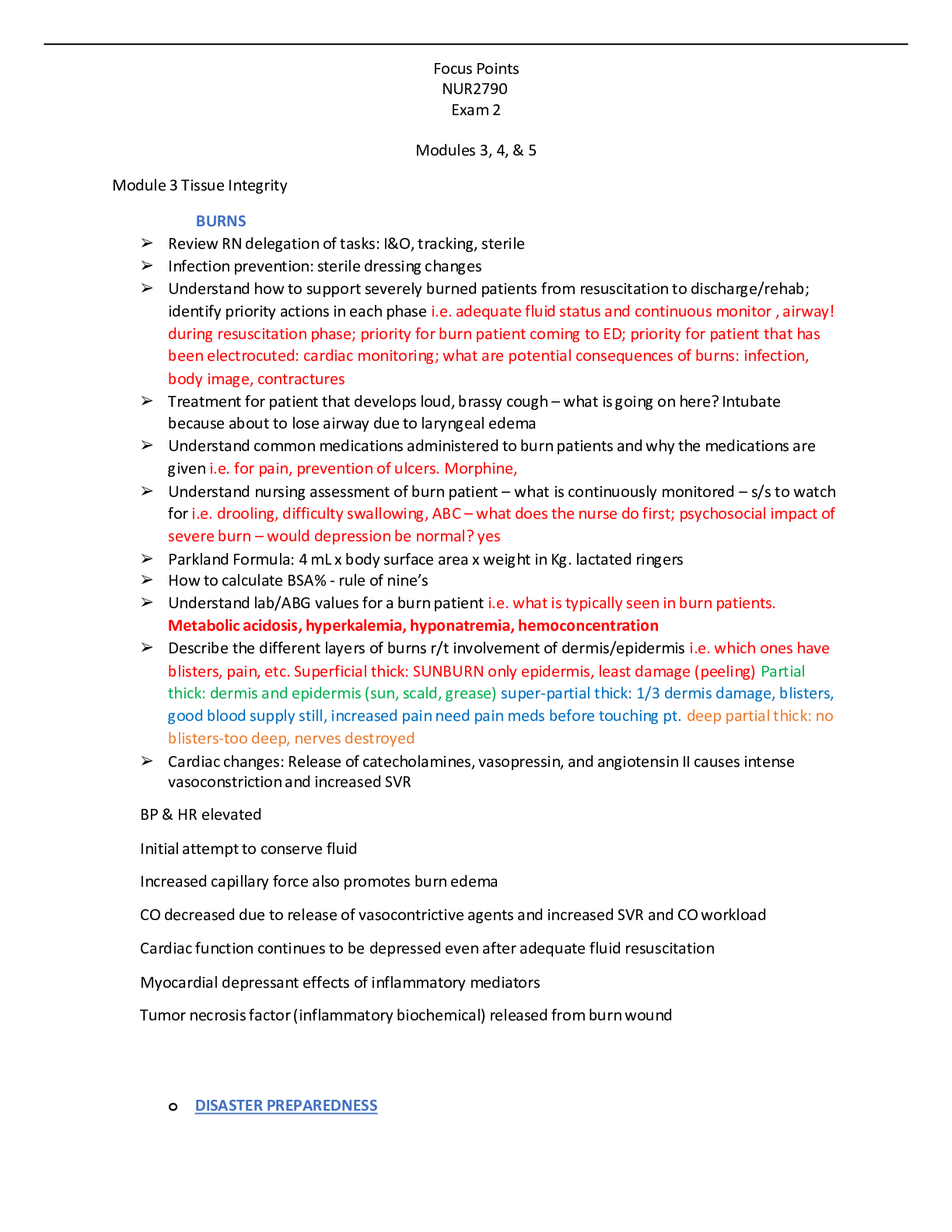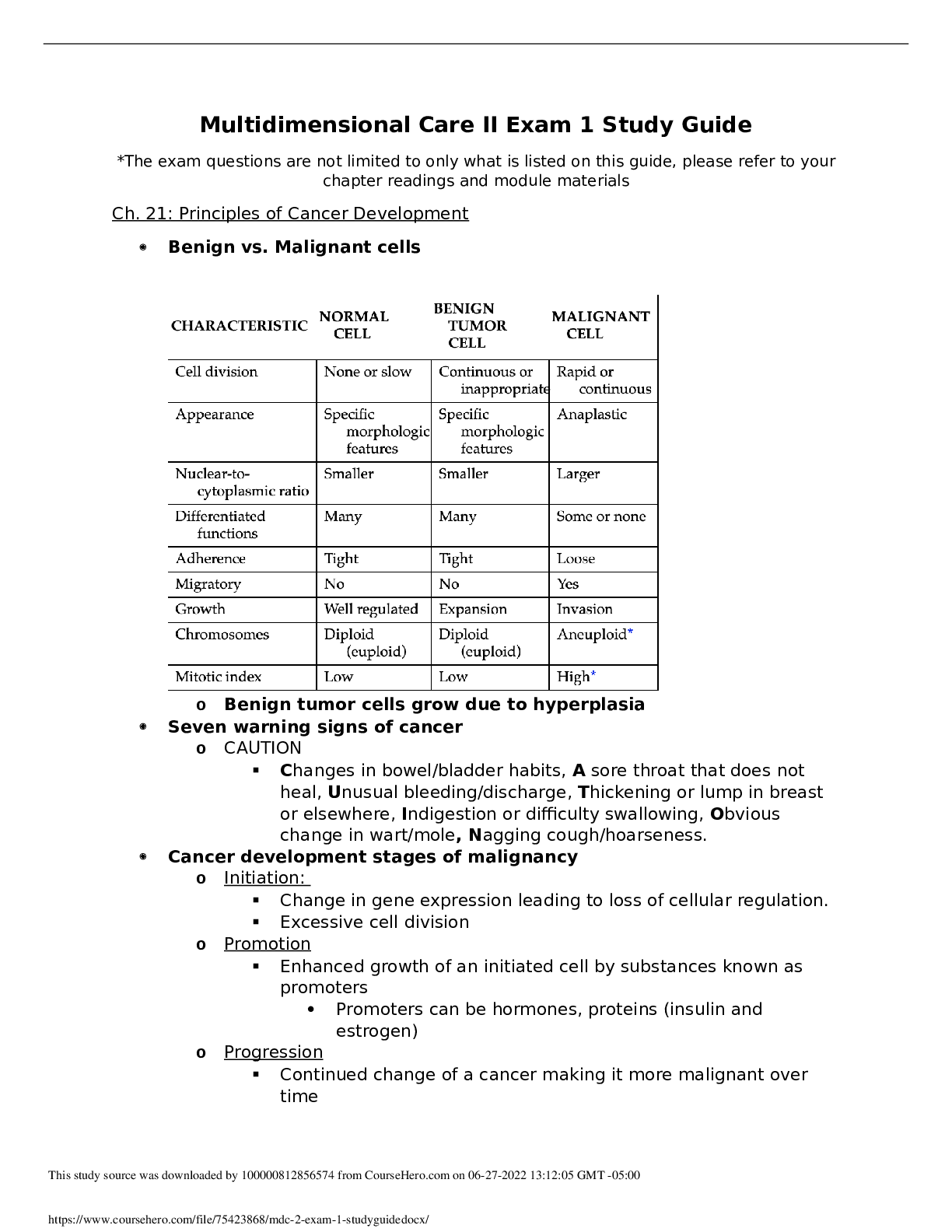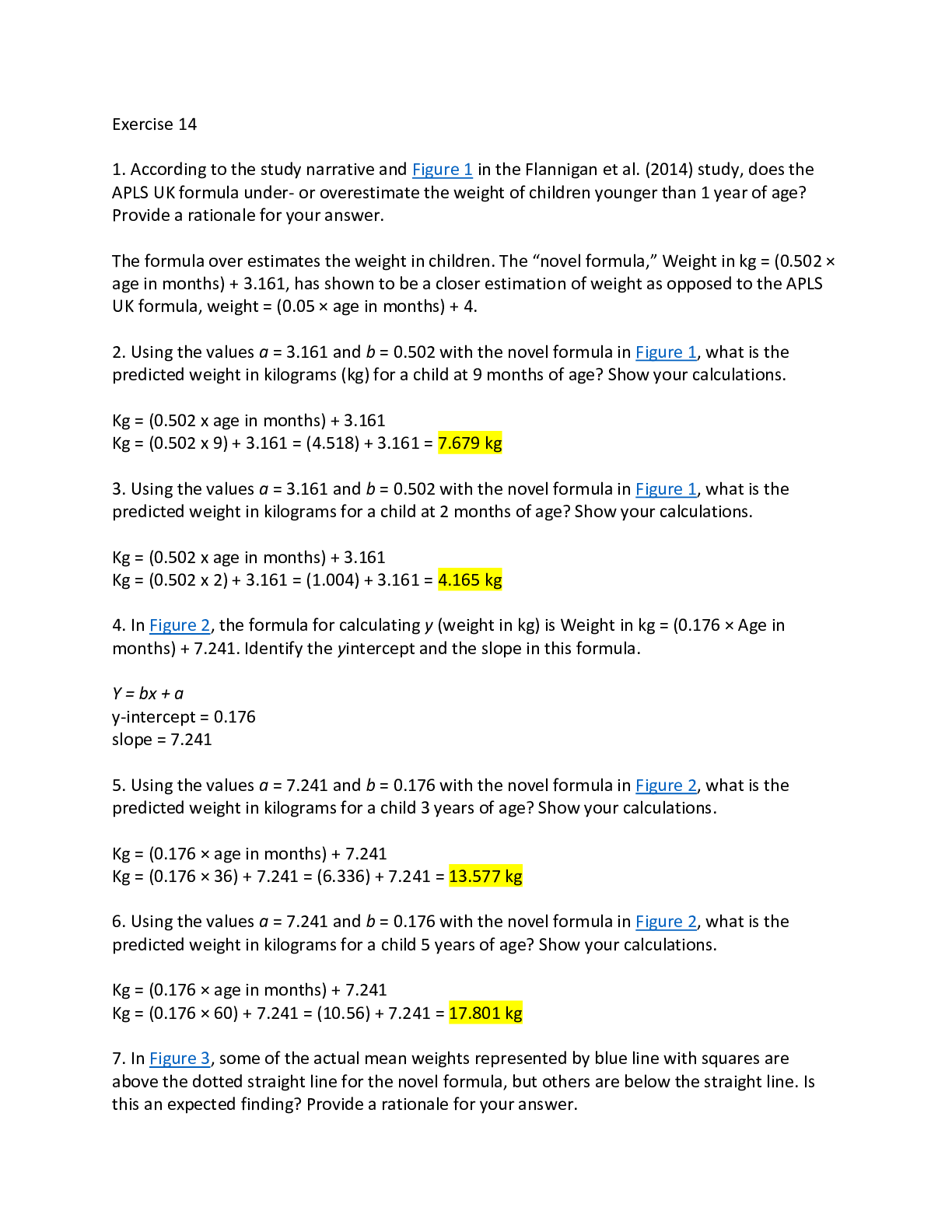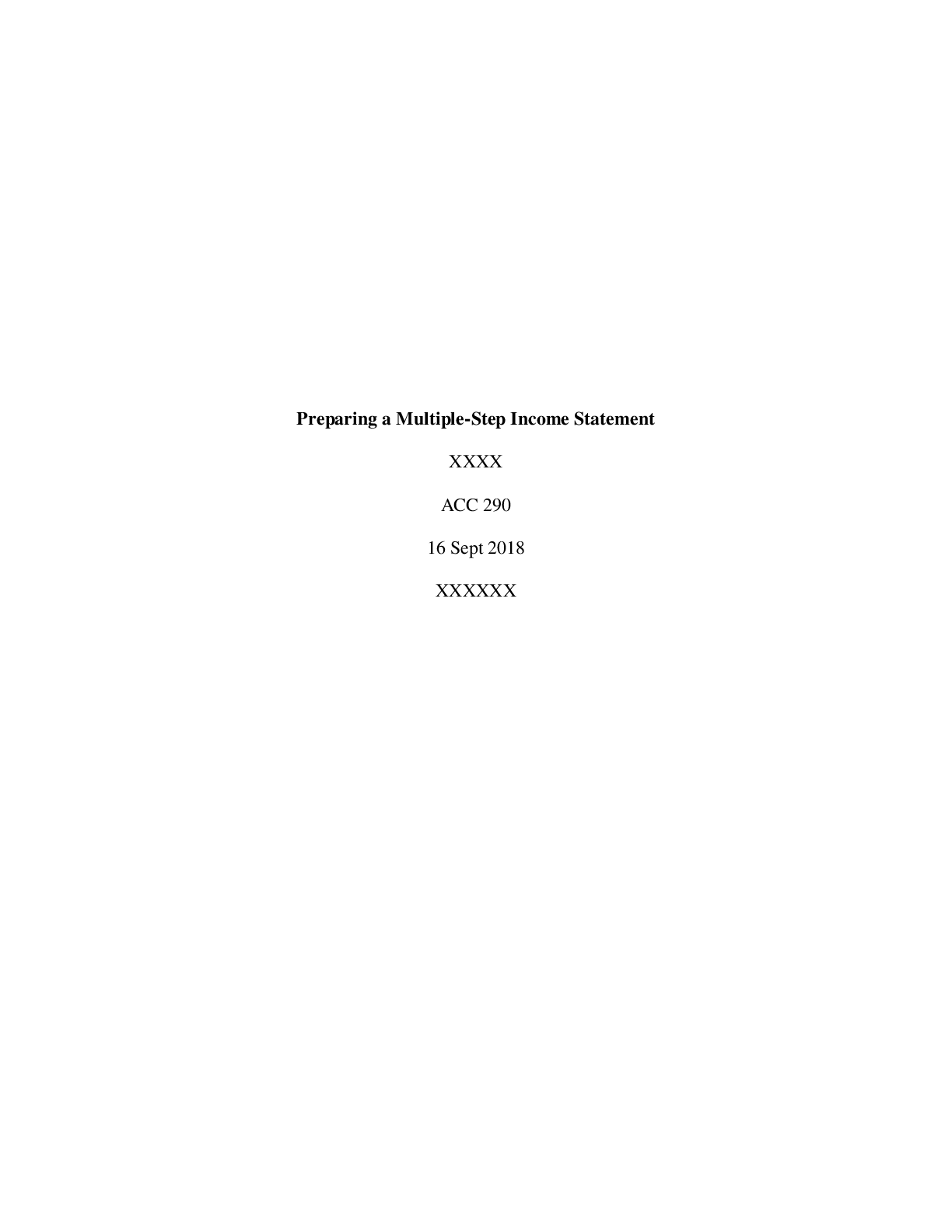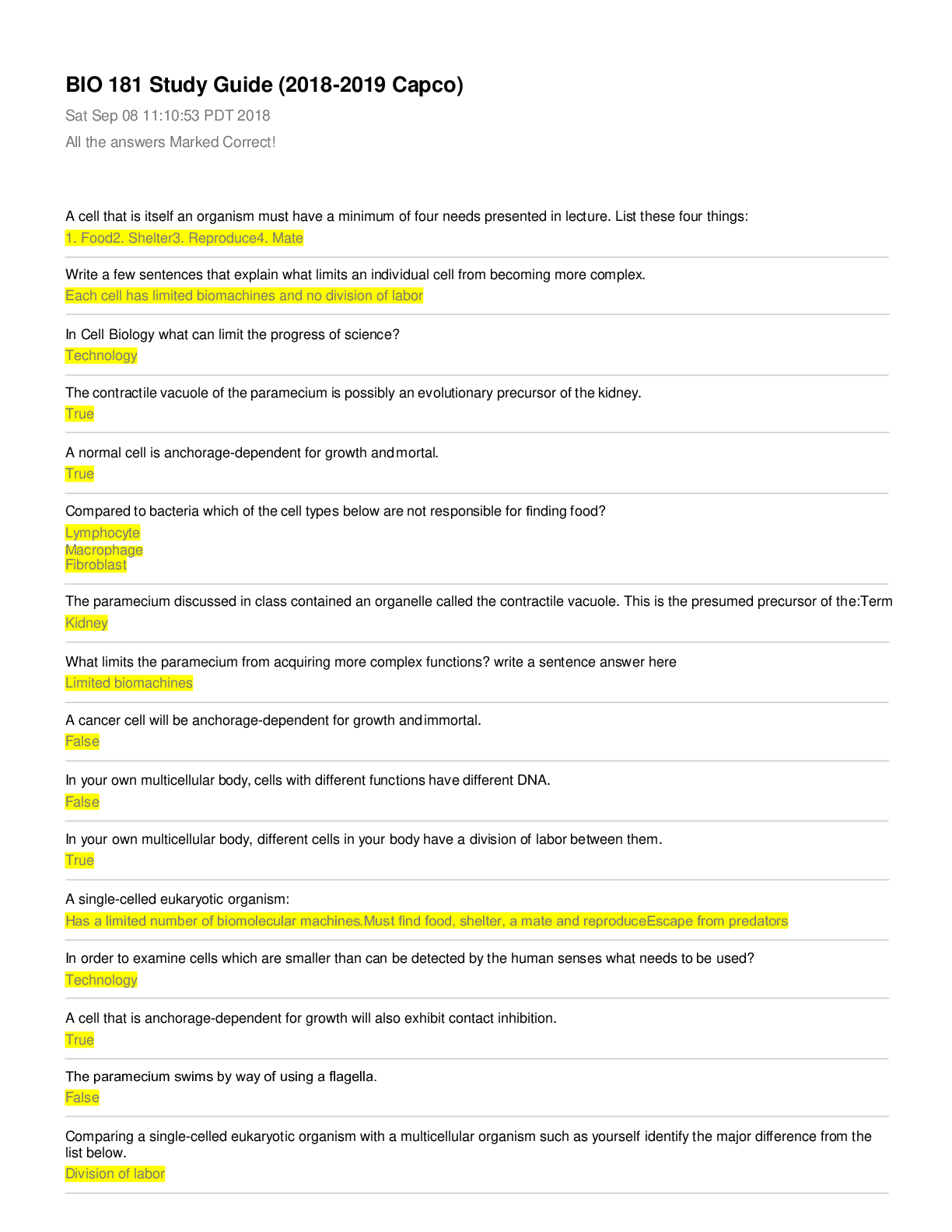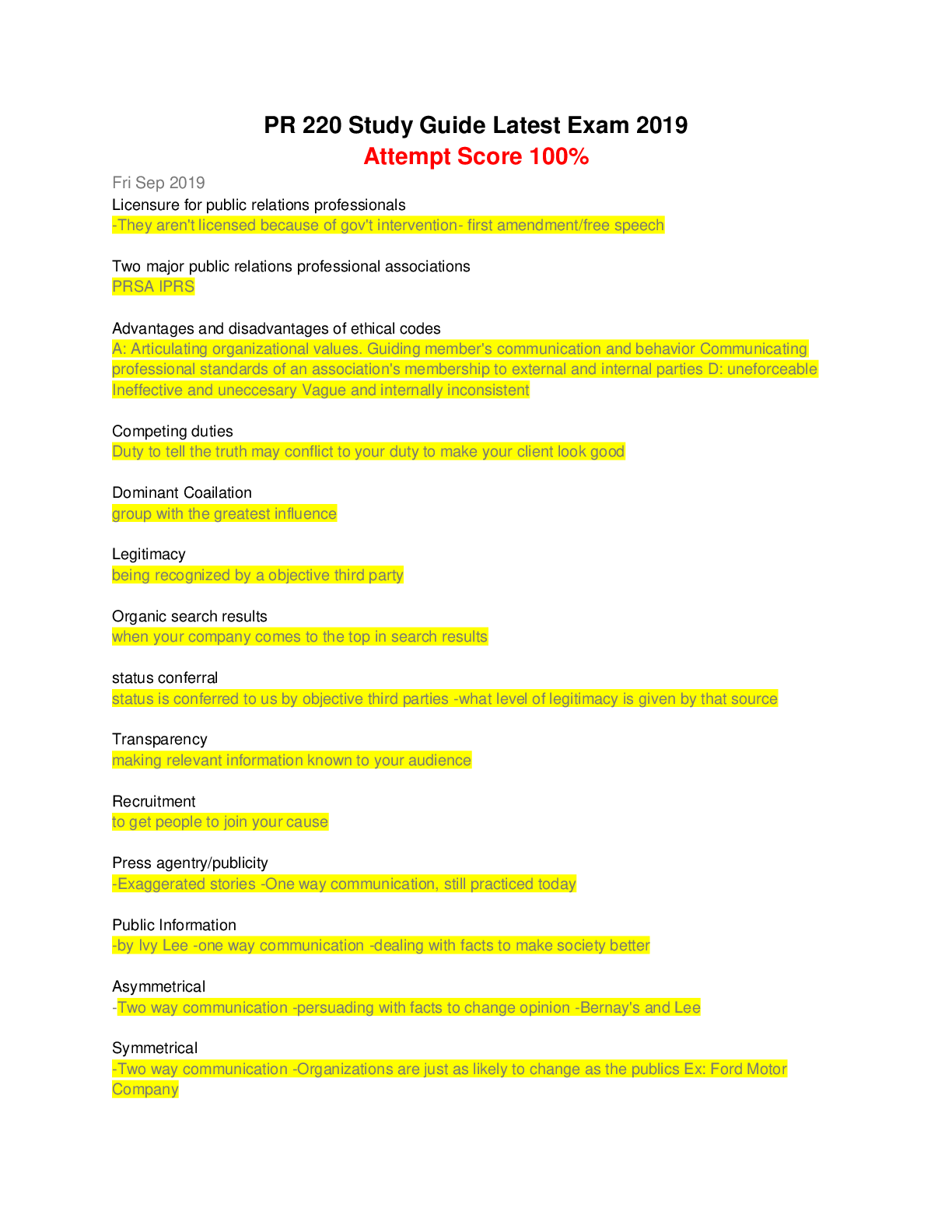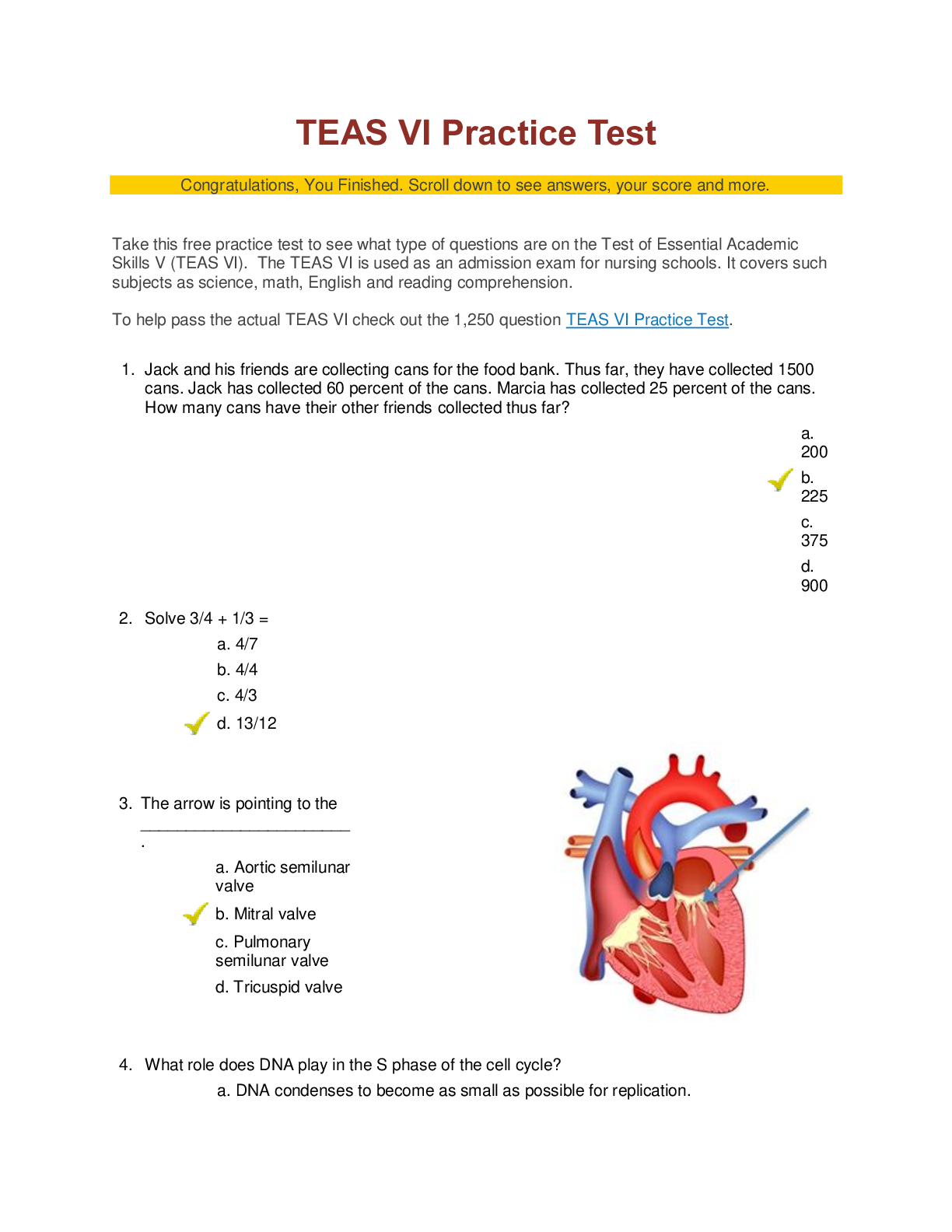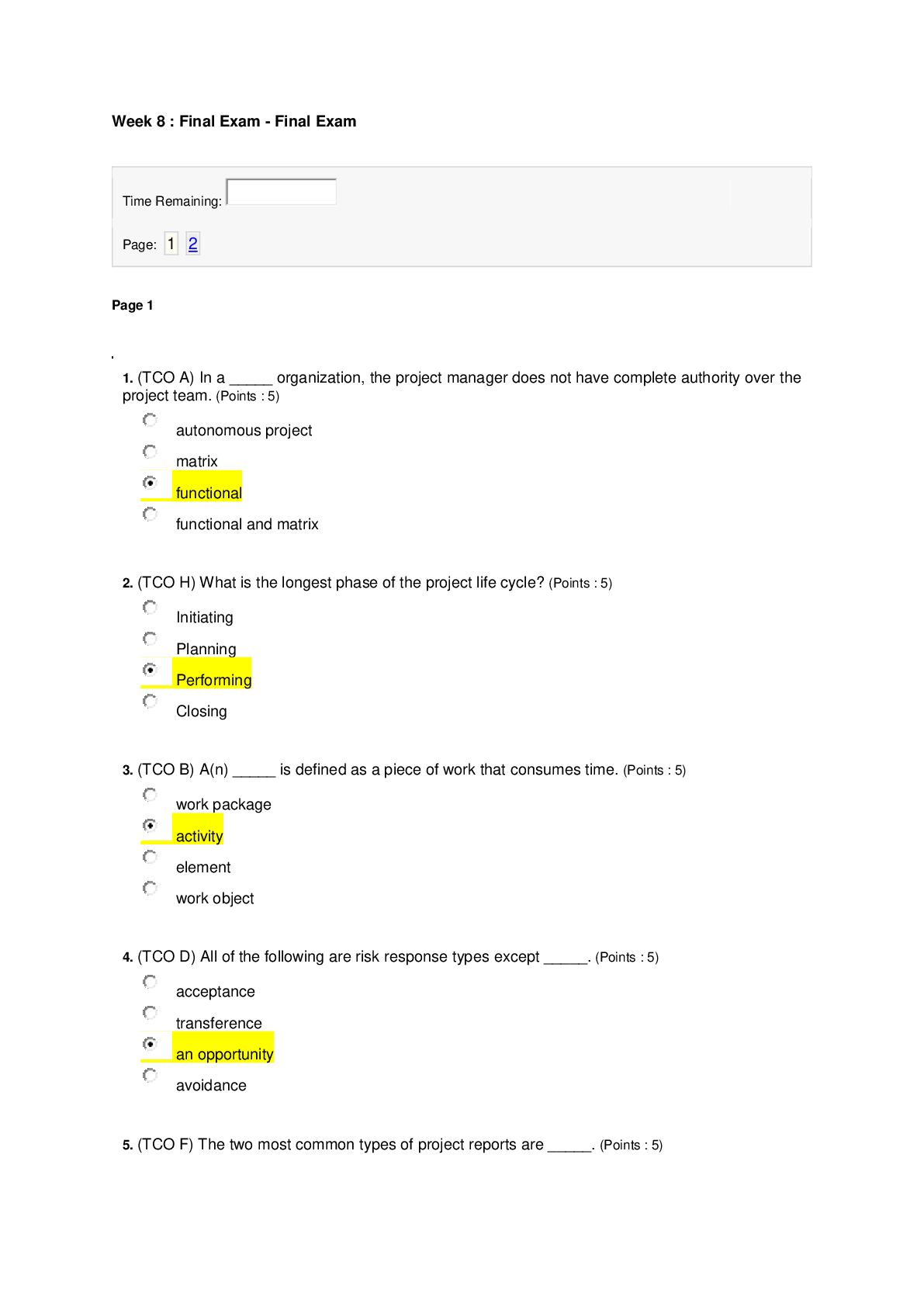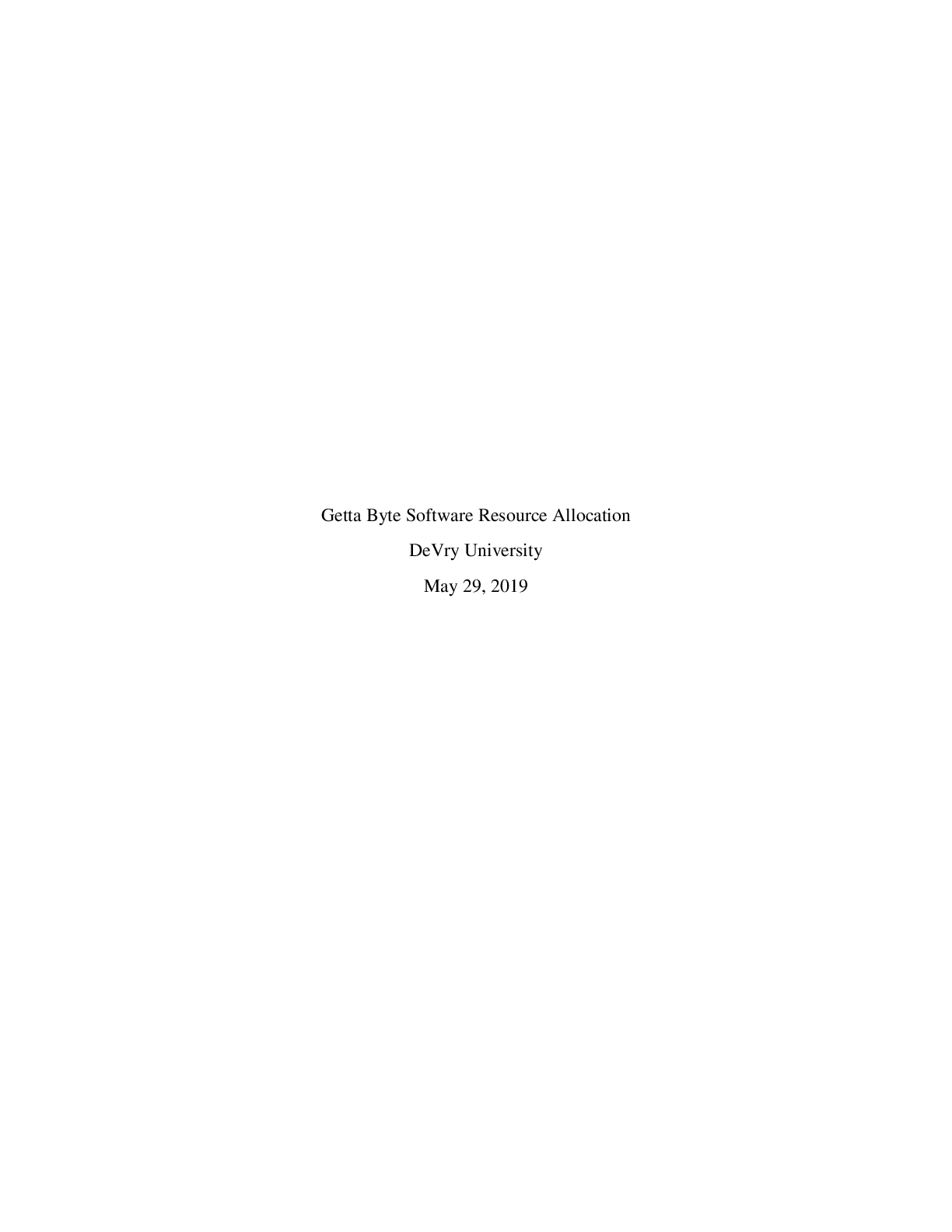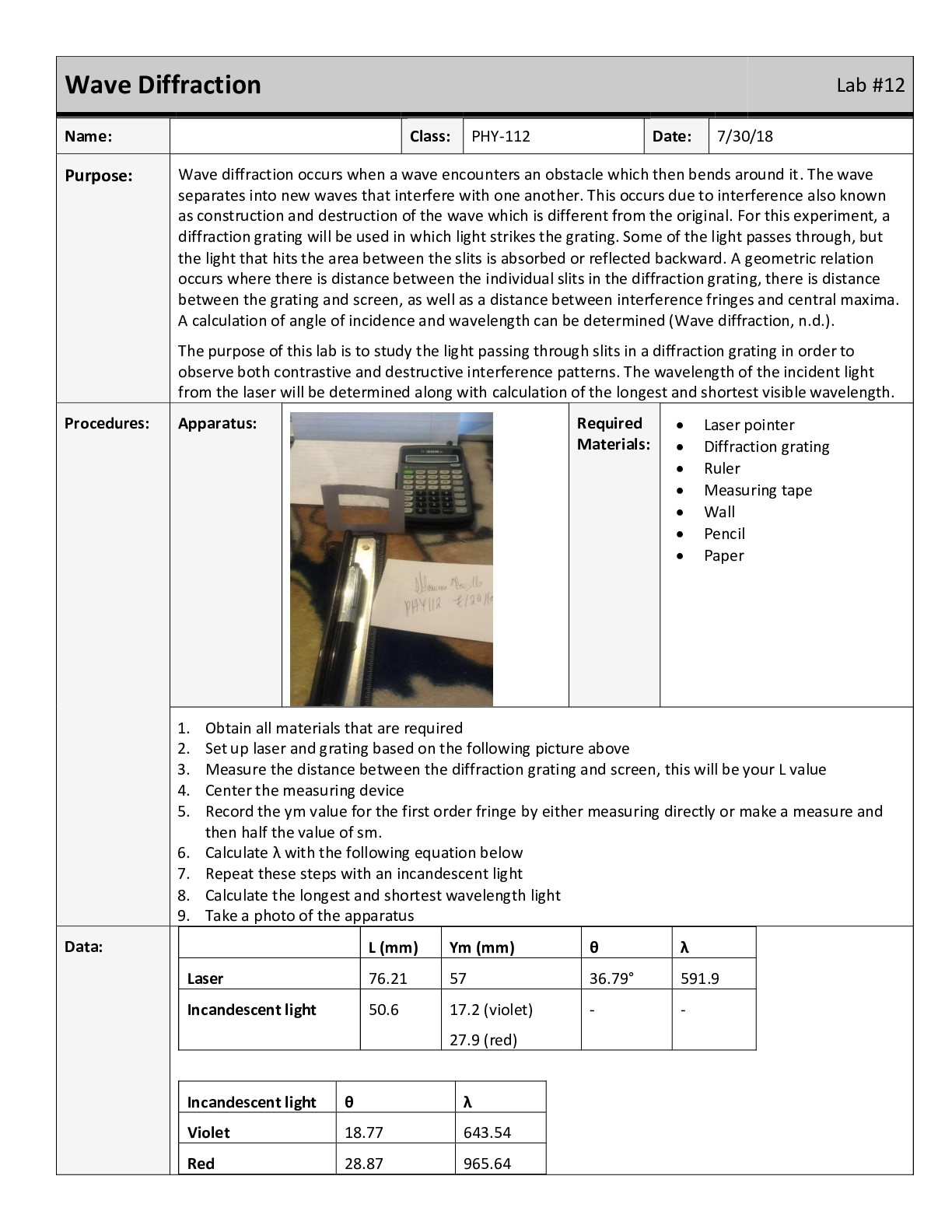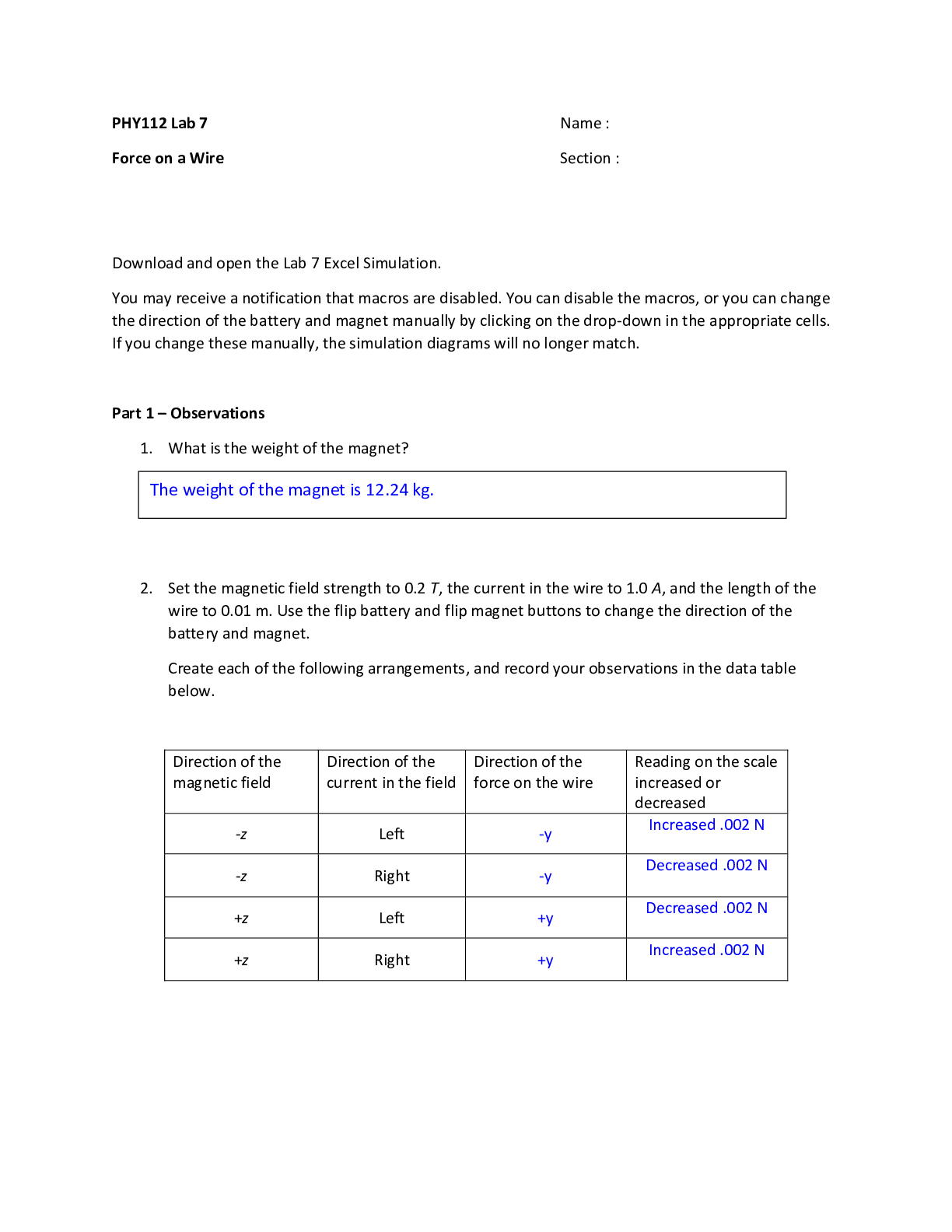*NURSING > STUDY GUIDE > NR 507Final Study Guide. (All)
NR 507Final Study Guide.
Document Content and Description Below
Final Study Guide Reproductive: o Endometrial cycle (menstrual cycle) and the occurrence of ovulation During menstruation (menses), the functional layer if endometrium disintegrates and i... s discharges through the vagina. Follicular/proliferative phase - GnRH and a balance between activin and inhibin from the granulosa cells contribute to the rise of FSH levels, which stimulates a number of follicles. The pulsatile secretion of FSH from the anterior pituitary gland rescues a dominant ovarian follicle from apoptosis by days 5 to 7 days of the cycle. Together estrogen and FSH increase FSH receptors in the granulosa cells of the primary follicle, making them more sensitive to FSH. FSH and estrogen combine to induce production of LH receptors on the granulosa cells of the primary follicle, thus promoting LH stimulation to combine with FSH stimulation, causing more rapid secretion of follicular estrogen. As estrogen levels increase, FSH levels drop because of an increase in inhibin-B secreted by the granulosa cells in the dominant follicle. This drop in FSH level decreases the growth of the less-developed follicles. Estrogen causes cells of the endometrium to proliferate and stimulates production of LH. Luteal/secretory phase – ovulation marks the beginning of this phase. The ovarian follicle begins its transformation into a corpus luteum. Pulsatile secretion of LH from the anterior pituitary stimulates the corpus luteum to secrete progesterone, which in turn initiates the secretory phase of endometrial development. Glands and blood vessels in the endometrium branch and curl throughout the functional layer, and the glands begin to secrete a thin glycogencontaining fluid, the secretory phase. If conception occurs, the nutrient-laden endometrium is ready for implantation. Human chorionic gonadotropin (HCG) is secreted 3 days after fertilization by blastocytes and maintains the corpus luteum once implantation occurs at about day 6 or 7. HCG can be detected in maternal blood and urine 8 to 10 days after ovulation. Ischemic/menstrual phase The production of estrogen and progesterone continues until [Show More]
Last updated: 1 year ago
Preview 1 out of 34 pages
Instant download

Buy this document to get the full access instantly
Instant Download Access after purchase
Add to cartInstant download
Reviews( 0 )
Document information
Connected school, study & course
About the document
Uploaded On
Jul 30, 2021
Number of pages
34
Written in
Additional information
This document has been written for:
Uploaded
Jul 30, 2021
Downloads
0
Views
44


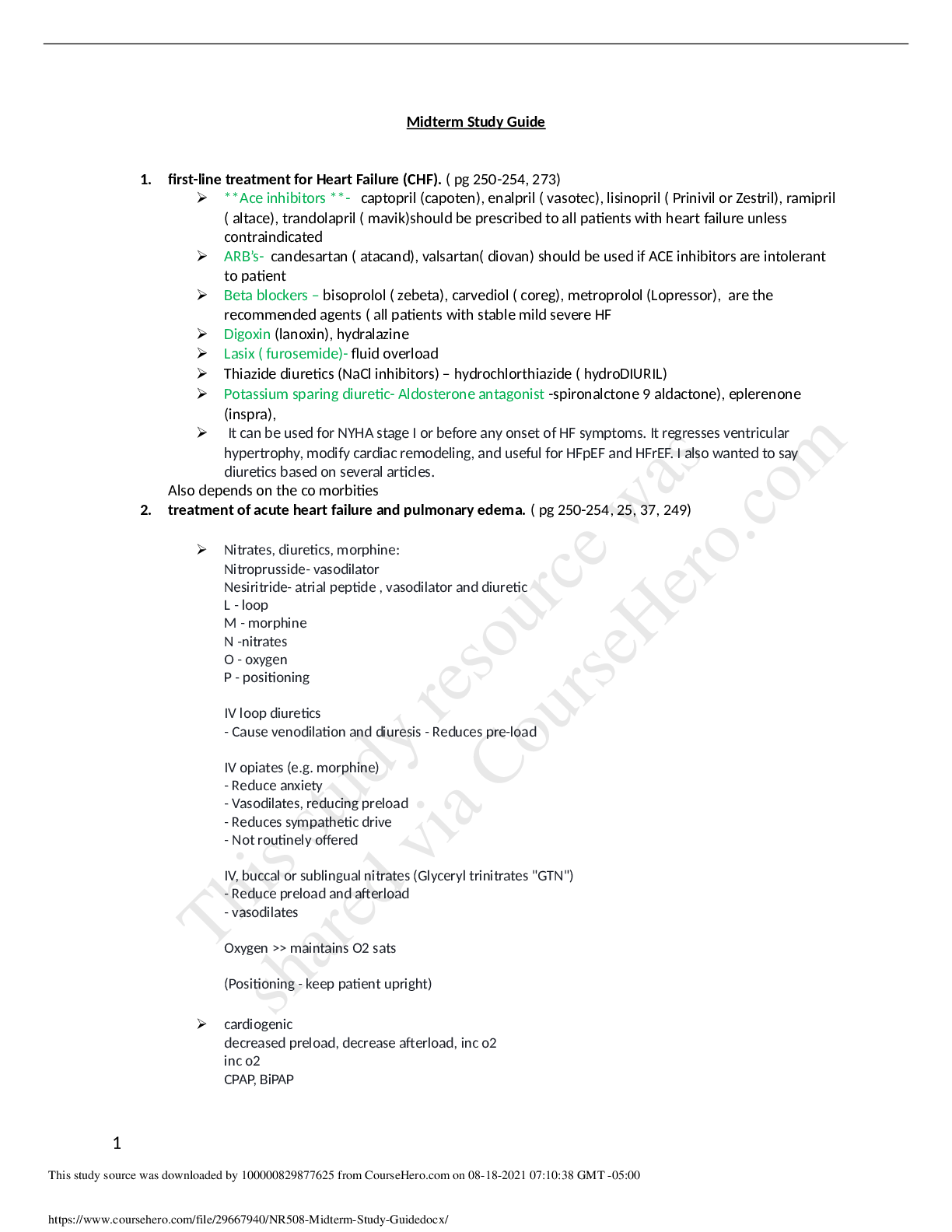
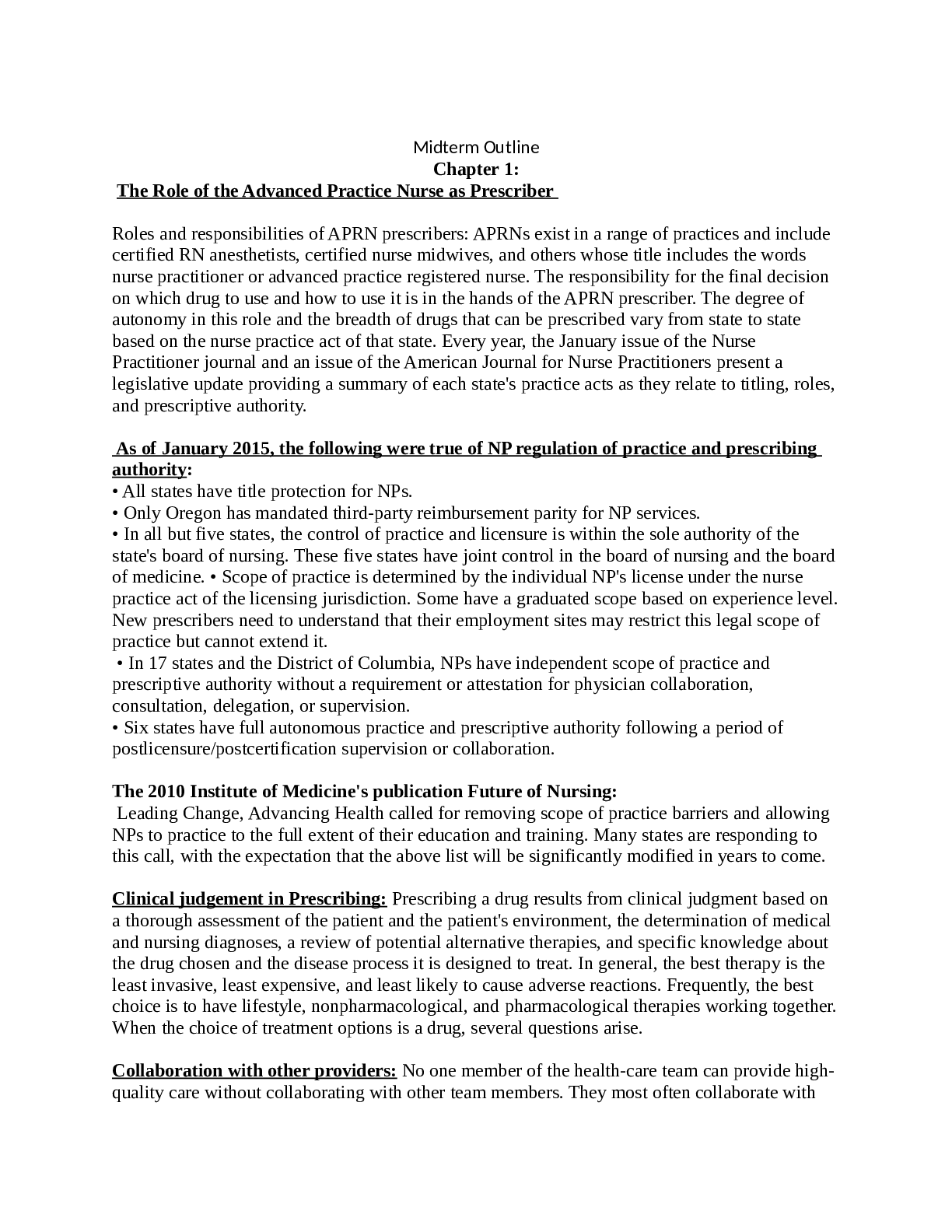
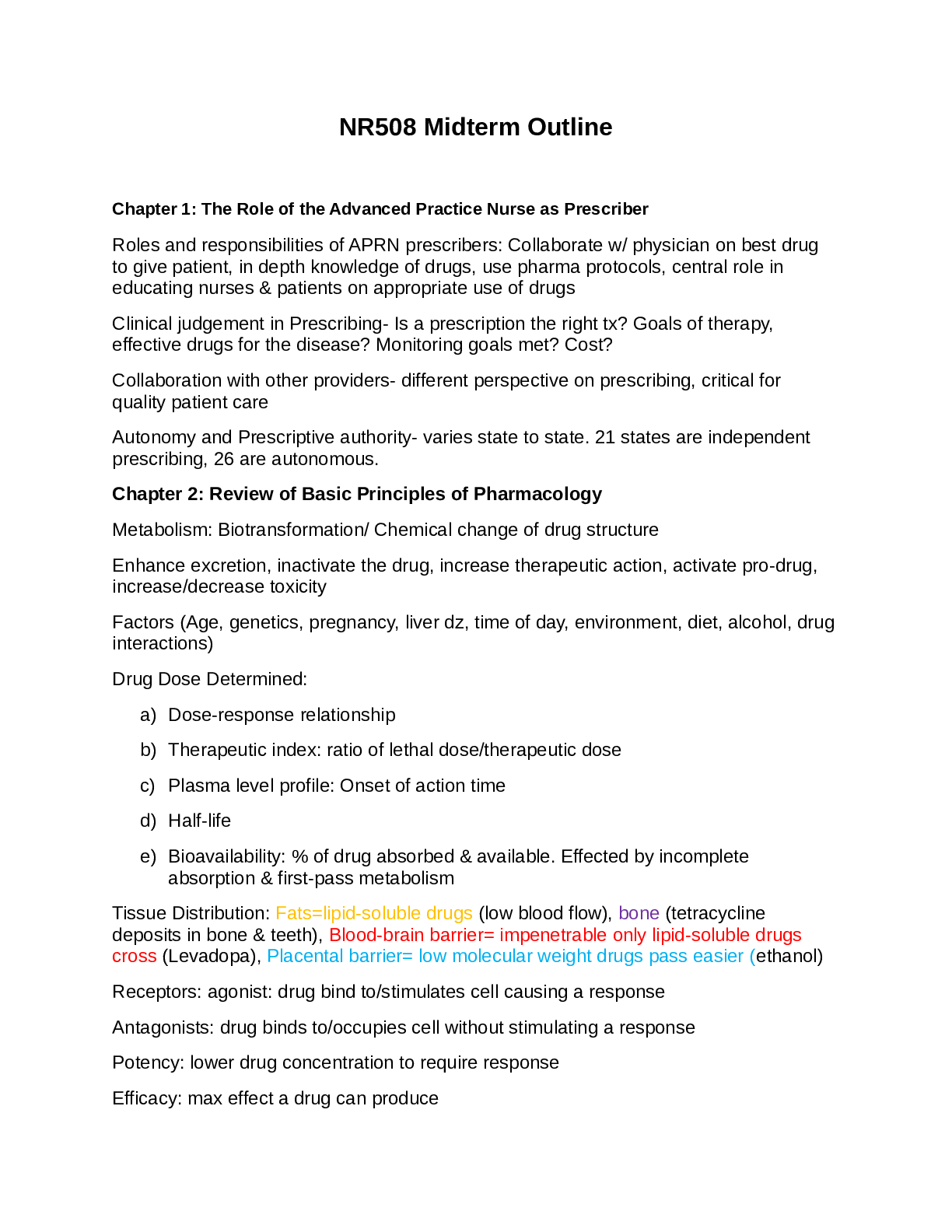
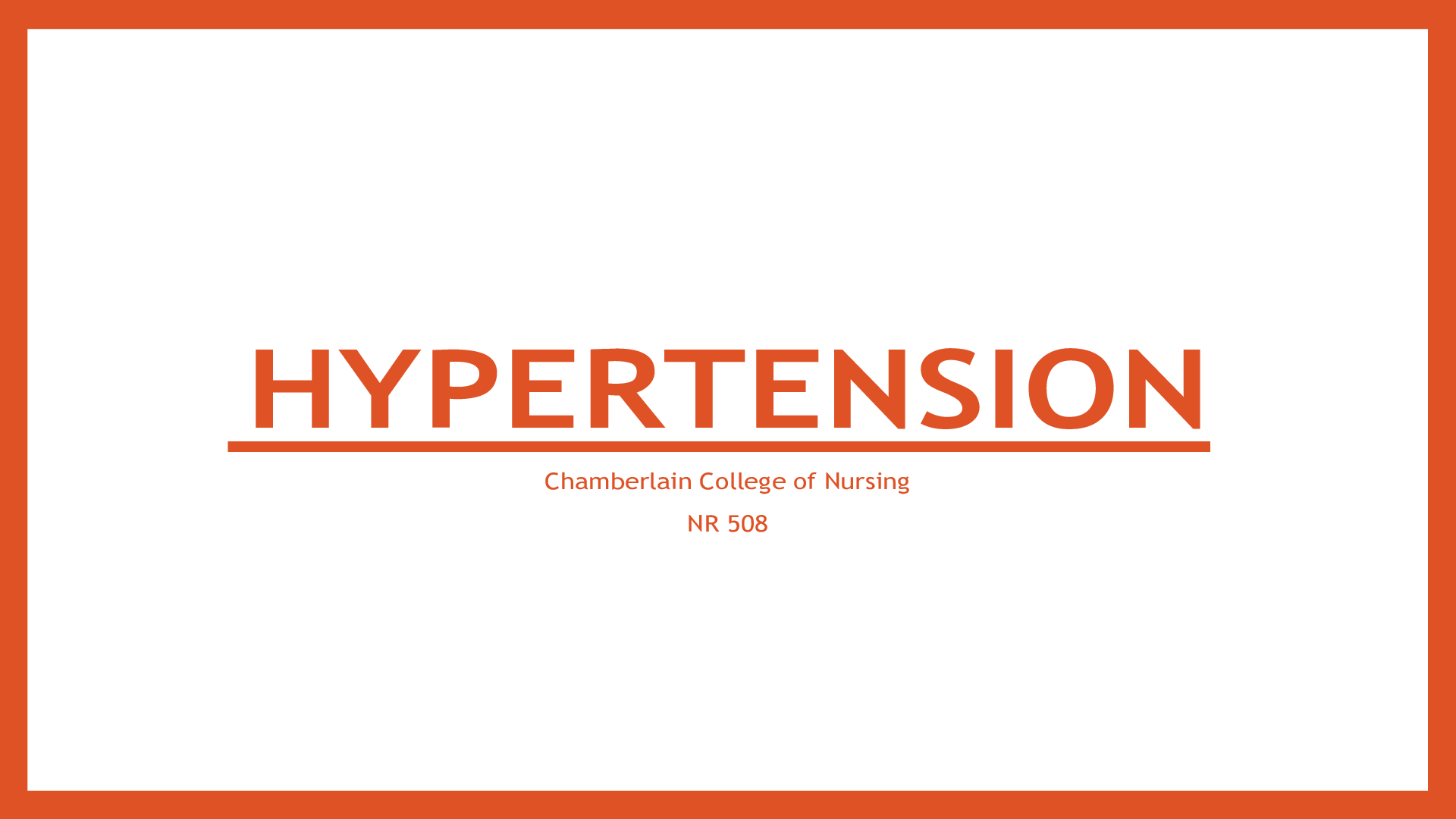

.png)
